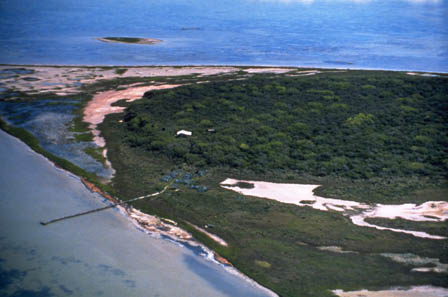 |
|||
| HOME | ABOUT US | PROJECTS | PUBLICATIONS | ALMANAC | SITE INDEX | |||
 |
What is the Laguna Madre?The Laguna Madre of Texas and Tamaulipas is a hypersaline coastal lagoon stretching from north to south along the Gulf of Mexico coast and joined roughly in the middle by the Rio Grande Delta. Unique in the world, the binational Laguna Madre contains vast, ecologically productive seagrass beds nursery grounds for marine life in the bay and gulf. The two lagoons produce many thousands of pounds of shrimp and finfish and are the foraging and nesting grounds for colonial water birds like the threatened reddish egret. The binational Laguna Madres is the wintering ground for the largest concentration of shorebirds, ducks and geese than any other lagoon system in Texas, Mexico and the Caribbean. Economic importance of the Laguna Madre Supports $225 million in annual revenue from sport-fish and recreational tourism industries in Texas The Tamaulipas Laguna Madre generates about 3,600 tons of shrimp each year, and the Texas system provides over 50% of the yearly state fish catch. The Laguna Madre is a key component of the Lower Rio Grande Valley refuges and nature preserves which bring economic benefits of $100 million to the LRGV annually Supports beach-related tourism for the Matamoros area and is popular with Monterrey-based sport fishermen Texas Habitat Characteristics Eleven unique and distinct plant and animal communities 18 threatened/endangered species Northernmost limit for many Mexican species (Green jay), and southernmost limit for some US species (Beaver/castor) Convergence of northern temperate, southern tropical, western chihuahuan desert and eastern coastal influences contributes to greater ecological diversity Coastal nesting islands host thousands of wading birds each year | |||
| HOME | ABOUT US | PROJECTS | PUBLICATIONS | ALMANAC | SITE INDEX | |||||